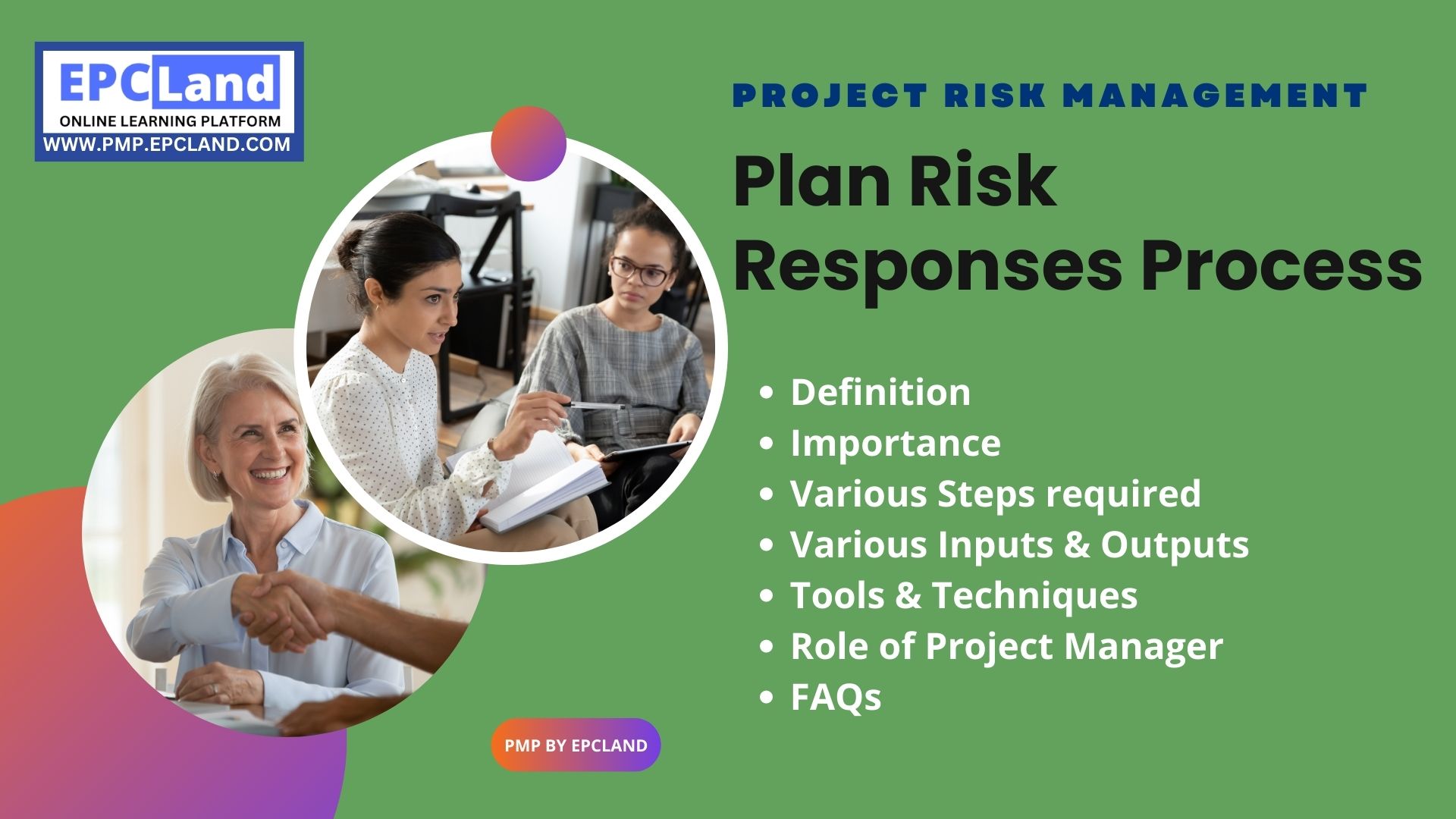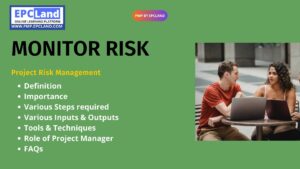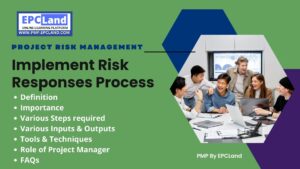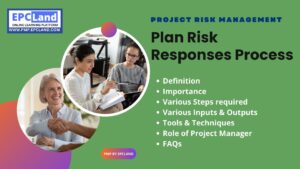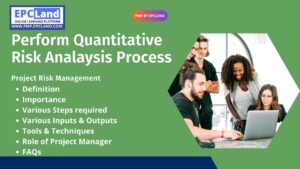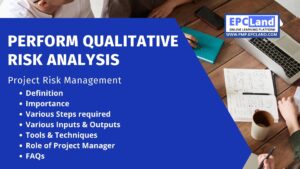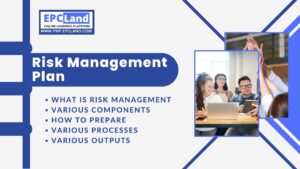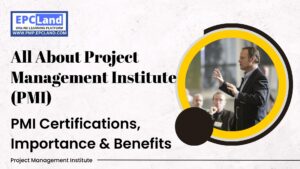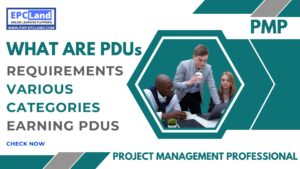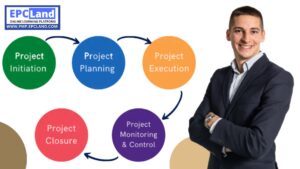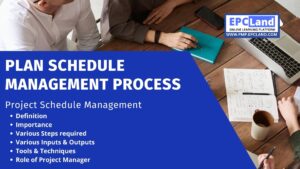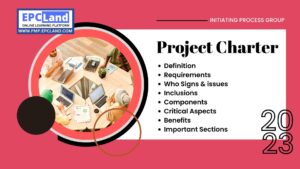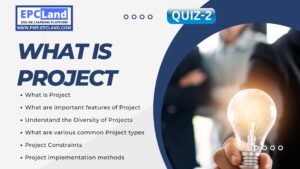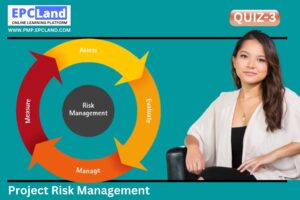The Plan Risk Response Process is a critical aspect of Project Risk Management that involves identifying, analyzing, and planning responses to potential risks in a project. This process helps project managers to proactively address potential issues before they become major problems, ensuring the smooth and successful completion of the project. A well-crafted plan of risk response can significantly minimize the impact of risks and increase the chances of project success.
The process begins with identifying and assessing risks, followed by choosing the most appropriate response for each risk. Responses may include accepting the risk, transferring the risk to another party, mitigating the risk through preventive measures, or avoiding the risk altogether. The chosen responses are then documented and monitored throughout the project lifecycle to ensure that they remain effective.
Incorporating the Plan Risk Response Process into project management practices can greatly enhance the overall success of a project and reduce the likelihood of unexpected issues arising. By anticipating and responding to potential risks, project managers can ensure that their projects are completed on time, within budget, and to the required standards.
What is the Importance of “Plan Risk Responses Process” in Project Risk Management
The Plan Risk Response Process is important in Project Risk Management for several reasons:
- Proactive Planning: It enables project managers to proactively identify, analyze, and plan responses to potential risks, reducing the likelihood of unexpected issues and increasing the chances of project success.
- Risk Minimization: By anticipating and responding to potential risks, the process minimizes their impact and reduces the overall risk of the project.
- Improved Decision-Making: The process provides project managers with a structured approach to risk management, enabling them to make informed decisions about the best ways to respond to risks.
- Increased Transparency: The documentation and monitoring of risk responses throughout the project lifecycle ensures that everyone involved in the project is aware of the potential risks and the actions being taken to mitigate them.
- Better Resource Allocation: The process helps project managers to allocate resources effectively, ensuring that the most important risks are addressed first and that resources are used effectively.
Attempt Quiz-1 on Plan Risk Responses Process
What are Various Steps required in “Plan Risk Responses Process” in Project Risk Management
The Plan Risk Response Process in Project Risk Management typically involves the following steps:
- Identify Risks: The first step is to identify all potential risks that may affect the project, including both internal and external risks.
- Assess Risks: Once the risks have been identified, they must be assessed to determine their potential impact on the project and the likelihood of their occurrence.
- Develop Response Strategies: Based on the assessment of the risks, appropriate response strategies should be developed for each risk. These strategies could include accepting the risk, transferring the risk to another party, mitigating the risk through preventive measures, or avoiding the risk altogether.
- Choose Response Options: The most appropriate response option should be chosen for each risk, taking into account the potential impact and likelihood of each risk, as well as the resources and constraints of the project.
- Document Responses: The chosen responses should be documented and included in the project plan, including any associated costs and resource requirements.
- Implement Responses: The responses should be implemented as part of the project plan, with appropriate monitoring and control mechanisms in place to ensure their effectiveness.
- Monitor and Review: The responses should be monitored throughout the project lifecycle, and any necessary adjustments should be made as the project progresses. At regular intervals, the entire risk management process should be reviewed and updated as necessary.
What are various Tools & Techniques used for “Plan Risk Responses Process” in Project Risk Management
The Plan Risk Response Process in Project Risk Management can be supported by various tools and techniques, including:
- Risk Matrix: A risk matrix is a graphical representation of the likelihood and impact of potential risks. It can be used to prioritize risks and to guide the development of response strategies.
- SWOT Analysis: SWOT (Strengths, Weaknesses, Opportunities, and Threats) analysis is a tool used to identify and assess the internal and external risks affecting a project.
- Decision Tree Analysis: Decision tree analysis is a tool used to evaluate the outcomes of different response options and to choose the most appropriate option.
- Cost-Benefit Analysis: Cost-benefit analysis is a tool used to evaluate the costs and benefits of different response options and to determine the most cost-effective option.
- Simulation: Simulation is a technique used to model the behavior of a system, including the potential impact of risks, and to evaluate the effectiveness of different response options.
- Scenario Analysis: Scenario analysis is a technique used to evaluate the impact of different scenarios on the project, including the impact of potential risks.
- Expert Judgment: Expert judgment is a technique used to seek input from individuals with relevant expertise and experience, such as project managers, risk management specialists, and subject matter experts.
What are various Inputs required for “Plan Risk Responses Process” in Project Risk Management
The Plan Risk Response Process in Project Risk Management requires several inputs, including:
- Risk Register: The risk register is a document that lists all potential risks identified during the risk management process, including their likelihood, impact, and response options.
- Project Management Plan: The project management plan provides the overall framework for the project, including the objectives, scope, budget, and timeline. It is used to guide the development of the risk response plan.
- Project Schedule: The project schedule provides a timeline for the project, including the start and end dates for each activity, and is used to determine the potential impact of risks on the project timeline.
- Stakeholder Register: The stakeholder register is a document that lists all stakeholders involved in the project, including their interests, expectations, and influence. It is used to determine the potential impact of risks on stakeholders and to guide the development of response options.
- Cost Management Plan: The cost management plan provides the overall framework for cost management, including the budget, cost baseline, and cost control procedures. It is used to determine the potential impact of risks on the project budget.
- Resource Management Plan: The resource management plan provides the overall framework for resource management, including the allocation of resources, such as personnel, equipment, and materials. It is used to determine the resources required to implement risk response options.
What are various Outputs required for “Plan Risk Responses Process” in Project Risk Management
The Plan Risk Response Process in Project Risk Management produces several outputs, including:
- Risk Response Plan: The risk response plan is a document that outlines the strategies and actions to be taken in response to each risk identified in the risk register.
- Update to Project Management Plan: The project management plan may be updated to reflect the changes resulting from the risk response plan, including changes to the project objectives, scope, budget, and timeline.
- Update to Project Schedule: The project schedule may be updated to reflect the changes resulting from the risk response plan, including changes to the start and end dates for each activity.
- Update to Cost Management Plan: The cost management plan may be updated to reflect the changes resulting from the risk response plan, including changes to the project budget.
- Update to Resource Management Plan: The resource management plan may be updated to reflect the changes resulting from the risk response plan, including changes to the allocation of resources.
- Approval and Authorization: Approval and authorization may be required from stakeholders, including the project sponsor, customer, and key stakeholders, before the risk response plan can be implemented.
What is the role of Project Manager in “Plan Risk Responses Process” in Project Risk Management
The Project Manager plays a crucial role in the Plan Risk Response Process in Project Risk Management. Some of the key responsibilities of the Project Manager include:
- Facilitating the risk management process: The Project Manager is responsible for ensuring that the risk management process is conducted in a systematic and thorough manner, including the identification, analysis, and assessment of risks.
- Developing the risk response plan: The Project Manager is responsible for developing the risk response plan, including the strategies and actions to be taken in response to each risk.
- Coordinating with stakeholders: The Project Manager is responsible for coordinating with stakeholders, including the project sponsor, customer, and key stakeholders, to ensure that the risk response plan is comprehensive and effective.
- Implementing the risk response plan: The Project Manager is responsible for implementing the risk response plan, including the strategies and actions to be taken in response to each risk.
- Monitoring and controlling risks: The Project Manager is responsible for monitoring and controlling risks throughout the project, including tracking the implementation of the risk response plan and updating the risk register as necessary.
- Communicating with stakeholders: The Project Manager is responsible for communicating with stakeholders about the risk management process and the risk response plan, including the results of the risk management process and the status of the risk response plan.
Attempt Quiz-1 on Plan Risk Responses Process
Final Take Away on “Plan Risk Responses Process” in Project Risk Management
The Plan Risk Response Process in Project Risk Management is a crucial step in ensuring the success of a project. By identifying, analyzing, and assessing risks, and then developing and implementing a comprehensive risk response plan, project managers can effectively manage risks and minimize their impact on the project. The role of the Project Manager is critical in this process, as they are responsible for facilitating the risk management process, coordinating with stakeholders, implementing the risk response plan, monitoring and controlling risks, and communicating with stakeholders. With a well-executed Plan Risk Response Process, projects can be completed on time, within budget, and to the satisfaction of all stakeholders.
FAQs on “Plan Risk Responses Process” in Project Risk Management
- What is the purpose of the Plan Risk Response Process in Project Risk Management?
- The purpose of the Plan Risk Response Process in Project Risk Management is to identify, analyze, and assess risks, and then develop and implement a comprehensive risk response plan to minimize their impact on the project.
- What is the risk response plan in Project Risk Management?
- The risk response plan is a document that outlines the strategies and actions to be taken in response to each risk identified in the risk register.
- What is the role of the Project Manager in the Plan Risk Response Process in Project Risk Management?
- The Project Manager plays a crucial role in the Plan Risk Response Process in Project Risk Management, including facilitating the risk management process, developing the risk response plan, coordinating with stakeholders, implementing the risk response plan, monitoring and controlling risks, and communicating with stakeholders.
- What are the outputs of the Plan Risk Response Process in Project Risk Management?
- The outputs of the Plan Risk Response Process in Project Risk Management include the risk response plan, an update to the project management plan, an update to the project schedule, an update to the cost management plan, an update to the resource management plan, and approval and authorization from stakeholders.
- What are the tools and techniques used for the Plan Risk Response Process in Project Risk Management?
- The tools and techniques used for the Plan Risk Response Process in Project Risk Management include risk probability and impact analysis, risk response planning, and risk monitoring and control.
- What are the inputs required for the Plan Risk Response Process in Project Risk Management?
- The inputs required for the Plan Risk Response Process in Project Risk Management include the risk register, risk management plan, project management plan, project schedule, cost management plan, and resource management plan.
